Fahd A. Banakhr, Director, Yanbu Research Centre
 Dr. Fahd A. Banakhr is the Director of Yanbu Research Centre in Royal commission of Yanbu, Kingdom of Saudi Arabia.
Dr. Fahd A. Banakhr is the Director of Yanbu Research Centre in Royal commission of Yanbu, Kingdom of Saudi Arabia.
Dr. Fahd was born in Jeddah, Saudi Arabia 1977. He received his Associate Diploma from Yanbu Industrial College, Yanbu, Saudi Arabia, and his BEng. In Electronics and Industrial Control Engineering from the University of Nottingham, Nottingham, UK. His MSc degree in Electronics Instrumentation Systems from the University of Manchester, Manchester, UK. He was awarded his PhD from Loughborough University, UK in Pulsed Power and measuring intensive Pulsed Electric Field.
He was Awarded the High Voltage Association Student Excellence Award from IEEE International Power Modulator and High Voltage Conference in 2012, also he was awarded Sir Martin Award for Academic and non-academic achievement from Loughborough University in 2011.
He is a member of :
- Institute of Measurement and Control.
- IEEE Instrumentation and Measurement Society, and Intelligent Control technical committee of IEEE Control systems.
- Optical Society of America (executive member of the technical committee of Systems and Instrumentation)
Presentation: Royal Commission of Yanbu Build a Better Connected – Smart City
Yanbu Industrial City is the 3rd largest global refining hub with a capacity more than 1.1 million barrels per day and largest oil shipping port on the Red Sea. The Industrial production capacity of 131 MMtones/year, and the average annual growth rate of private sector investment is 18%. This paper will discuss the development of Yanbu Industrial City to become the first Smart City in Saudi Arabia and how build a better connected active network. Moreover, the paper will discuss the using the Internet of Things (IoT) in its Colleges as a Smart Campuses.
Rudolf Brandner, Head of Core Safety & Information Technologies, German Association for Electrical, Electronic & Information Technologies (DKE)
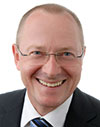 Rudolf Brandner is Head of Core Safety & Information Technologies at the German Association for Electrical, Electronic & Information Technologies (DKE). In his role he covers the very basic technologies on which systems necessary for e.g. smart grid, smart cities, mobility, etc. are built on.
Rudolf Brandner is Head of Core Safety & Information Technologies at the German Association for Electrical, Electronic & Information Technologies (DKE). In his role he covers the very basic technologies on which systems necessary for e.g. smart grid, smart cities, mobility, etc. are built on.
In addition Rudolf is co-convenor of IEC Standardization Evaluation Group 8, Communication Technologies and Architectures of Electrotechnical Systems.
He has over thirty years of experience in information and communication technologies and more than twenty years of experience in standardization and standardization eco-systems.
Prior to joining DKE, Rudolf was program manager at Nokia Siemens Networks, heading development, coordination and implementation of the global standardization strategy and overall standardization goals on wireline standardization including Access, Metro and Core Network. He represented NSN in international standardization organizations, fora and alliances. Rudolf also participated in the development of international standards in ITU-T, IEEE, IETF, ETSI and BBF.
At Siemens AG Rudolf lead the wireline standardization „Next Generation Networks“ (NGN). This included active participation in IETF, IEEE 802.1 and 802.3, ITU-T Focus Group NGN (FGNGN) and ITU-T SG 15, ETSI TISPAN, DSL-Forum, ATIS VoIP Focus Group, etc..
At the applied research center of SAP AG Rudolf lead a project on Internet Server Architecture next Generation based on globally distributed systems with 24/7 requirements. At the end-90s this proposal included already concepts of what is called “Edge Computing” today.
At the applied research center of Digital Equipment Corporation Rudolf started his career in the area of communication and computer science leading a project on quality of service guaranteed data transport for isochronous data. This included implementation and integration of RSVP, IPv6, ATM, MARS and MCS with a worldwide first demonstration between Paris and Rouen. In this context he also started his work in standardization.
Charles Despins, Ph.D., Eng. École de Technologie Supérieure (Université du Québec)
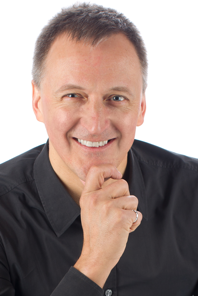 Charles Despins’ career has spanned 30 years in both the academic and industry segments of the information and communications technologies (ICT) sector. Following academic work as a faculty member of the Institut National de Recherche Scientifique (Université du Québec), he held various posts in the private sector, namely at Bell Nordiq Group as vice-president and chief technology officer, as a consultant for wireless network deployments in India and China and for 13 years, as President and CEO of Prompt inc., an ICT research and development consortium. In 2016, he returned to academia and is currently Professor of Electrical Engineering at École de Technologie Supérieure (Université du Québec) in Montreal, Canada. His research interests focus on wireless communications.
Charles Despins’ career has spanned 30 years in both the academic and industry segments of the information and communications technologies (ICT) sector. Following academic work as a faculty member of the Institut National de Recherche Scientifique (Université du Québec), he held various posts in the private sector, namely at Bell Nordiq Group as vice-president and chief technology officer, as a consultant for wireless network deployments in India and China and for 13 years, as President and CEO of Prompt inc., an ICT research and development consortium. In 2016, he returned to academia and is currently Professor of Electrical Engineering at École de Technologie Supérieure (Université du Québec) in Montreal, Canada. His research interests focus on wireless communications.
Dr. Despins is a Fellow of the Engineering Institute of Canada and a recipient (2006) of the Outstanding Engineer award from IEEE Canada. He is a former recipient of the “Best Paper of the Year” award in IEEE Transactions on Vehicular Technology. He is currently a frequent advocate on issues regarding the opportunities ICT offer to achieve sustainability in the 21st century.
Presentation: Green ICT: From Standards to a Green Label Certification
The IEEE Green ICT initiative’s mission statement is to build a holistic approach to sustainability by incorporating green metrics in various IEEE technical domains. This presentation will focus on the standards activity within the initiative. Current green ICT standards development within the initiative will be discussed as well as the broader goal of an IEEE green label certification.
Gerard Hayes, President & CEO, Wireless Research Center of NC
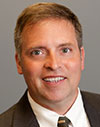 Dr. Hayes has nearly three decades of experience in government and commercial electromagnetic research and design. Prior to working with the Town of Wake Forest to establish the WRCNC in 2010, Dr. Hayes was the Director of Engineering at GreenWave Scientific where he led the development of antenna and RF circuit designs for a diverse range of DoD applications. At Sony Ericsson Mobile Communications (USA) Inc., Dr. Hayes provided global technical leadership in the Technology and Research organization with contributions to handset antenna design, technology, and radiated performance optimization. At Lockheed Martin (formerly Lockheed Missiles and Space Co.), Dr. Hayes supported research and development efforts for space-based, phased array applications. The scope of his experience encompasses electromagnetic theory, bioelectromagnetics, antenna design, RF circuit analysis, and material engineering. He has participated in the development of international standards for OTA, HAC, and SAR evaluation (including IEEE, IEC, CTIA, and C63 standards). With over 70 US patents, Dr. Hayes has maintained a prominent technical role in the wireless industry.
Dr. Hayes has nearly three decades of experience in government and commercial electromagnetic research and design. Prior to working with the Town of Wake Forest to establish the WRCNC in 2010, Dr. Hayes was the Director of Engineering at GreenWave Scientific where he led the development of antenna and RF circuit designs for a diverse range of DoD applications. At Sony Ericsson Mobile Communications (USA) Inc., Dr. Hayes provided global technical leadership in the Technology and Research organization with contributions to handset antenna design, technology, and radiated performance optimization. At Lockheed Martin (formerly Lockheed Missiles and Space Co.), Dr. Hayes supported research and development efforts for space-based, phased array applications. The scope of his experience encompasses electromagnetic theory, bioelectromagnetics, antenna design, RF circuit analysis, and material engineering. He has participated in the development of international standards for OTA, HAC, and SAR evaluation (including IEEE, IEC, CTIA, and C63 standards). With over 70 US patents, Dr. Hayes has maintained a prominent technical role in the wireless industry.
Presentation: IEEE P2510: Standard for Establishing Quality of Data Sensor Parameters in the IoT Environment
Due to the rapid convergence of connectivity and the ubiquitous deployment of IoT devices, the harmonization of sensor system interoperability is needed to enhance innovation. In close collaboration with industry and academic partners, IEEE has launched two initiatives to facilitate the Harmonization of Connectivity of the Digital Citizen and the Harmonization of Sensor System Performance. This session presents an overview of the IEEE P2510 efforts that examine Sensors and Sensor Systems and the IEEE Industry Connection project that examines the Digital Citizen’s connectedness from personal area networks and sensors to metropolitan scale connectedness within a Smart, Immersive City environment.
Akimasa Koizumi, President, Representative Director and CEO, El · L.Crown Ltd
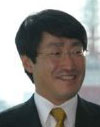 After joining Waseda University Advanced Academy of Science and Technology, I joined Mitsubishi Chemical. Master of Management Science at Stanford University. After returning to Japan he worked as a manager in the Corporate Planning Office and R & D Office. From San Francisco to the airport to Narita, Apple ‘s president Takeuchi was seated next to each other, and he was invited to join after 9 hours of flight interview. During his tenure he was engaged in business development for large enterprises that is hard work with Honda Eiko and Hector Saldana and others. As a distinctive skill as a businessman, any complicated event discussion is said to be “a person who always makes some sort of conclusion.” Mainly channel development, holding the first AECC (Apple Enterprise Computing Conference) outside the United States. Mitsubishi Corporation and Apple Business Center opened in Marunouchi. Leave a record of over 150% annual sales for large enterprises.
After joining Waseda University Advanced Academy of Science and Technology, I joined Mitsubishi Chemical. Master of Management Science at Stanford University. After returning to Japan he worked as a manager in the Corporate Planning Office and R & D Office. From San Francisco to the airport to Narita, Apple ‘s president Takeuchi was seated next to each other, and he was invited to join after 9 hours of flight interview. During his tenure he was engaged in business development for large enterprises that is hard work with Honda Eiko and Hector Saldana and others. As a distinctive skill as a businessman, any complicated event discussion is said to be “a person who always makes some sort of conclusion.” Mainly channel development, holding the first AECC (Apple Enterprise Computing Conference) outside the United States. Mitsubishi Corporation and Apple Business Center opened in Marunouchi. Leave a record of over 150% annual sales for large enterprises.
He joined Intellution as the first employee of the Asia-Pacific region, became President of Emerson Process Japan, took over as Asia Pacific’s chief executive and has more than 1,000 employees. It becomes GE Digital now.
Became the third largest ERP vendor in the world, president of Baan Japan Corporation. We will make Komatsu the biggest customer. After that he joined as the first employee of webMethods ‘ Asia Pacific, has achieved WW’s sales of 25% as CEO of the Asia Pacific region, and more than 100 employees. It is called a pro of launching the Asia-Pacific region of a foreign-affiliated company.
After that, he took office as MD, Asia Pacific of SRI (Stanford Research Institute), leading a joint research with large Japanese companies, robots, AI, Big Data, speech recognition, automotive computer etc. In Japan, signed a comprehensive agreement with Mitsui & Co. , Ltd. Research on conditions of innovation occurrence in Silicon Valley etc. He is a part-time lecturer at Tokyo Science University , Tokyo University of Agriculture and Technology , Senshu University and others. Enjoy exchange with students.
He took office as Director of El · Crown on December 15, 2017 and became President and Representative Director and CEO of the following week. Global Alliance, collaboration with the FA industry, sales to large companies, collaboration with large scale cloud operating companies, and overseas project in cooperation with Singapore corporation El · Crown System.
His hobbies include tennis, golf, squash, skiing, snowmobiling, downhill bicycles, motorcycles, traveling abroad.
Presentation: IIoT platform from Japan. Connected Industries 5.0
Japan aims to achieve “Society 5.0” through the full utilization of technological innovation including IIoT. Japanese government has announced “Connected Industries 5.0,” as a new concept framework. L.CROWN provides software platform for easy connected communication. L.CROWN focus on the Edge side so that it can collaborate with major cloud providers such as Microsoft, Amazon,GE, Siemens and Japanese IIoT vendors.
Performance of existing IIoT systems in use today is “spec in” on installation and thus faces many challenges in upgrading. L.CROWN leaves troublesome information analysis to AI and human to make judgment to call on important issues. The ability of L.Crown to adapt & grow with operation as well as system needs in the most significant advantages.
Oleg Logvinov, President and CEO IoTecha
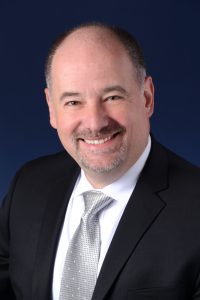 Mr. Logvinov is a co-founder, President, and CEO of IoTecha Corporation. IoTecha provides software and hardware products and Cloud Platform as a Service to power major Internet of Things market segments, including Electric Vehicle Charging Infrastructure and Smart Factory. IoTecha’s is accelerating the Electric Vehicle revolution by providing critical hardware and software components for the Smart Charging infrastructure and enabling the integration of tens of millions of Electric Vehicles with the Power Grid.
Mr. Logvinov is a co-founder, President, and CEO of IoTecha Corporation. IoTecha provides software and hardware products and Cloud Platform as a Service to power major Internet of Things market segments, including Electric Vehicle Charging Infrastructure and Smart Factory. IoTecha’s is accelerating the Electric Vehicle revolution by providing critical hardware and software components for the Smart Charging infrastructure and enabling the integration of tens of millions of Electric Vehicles with the Power Grid.
Prior to joining IoTecha Mr. Logvinov was a Director of Special Assignments in STMicroelectronics’ Industrial & Power Conversion Division where he was deeply engaged in market and technology development activities in the area of Industrial IoT including the applications of IEEE 1901 powerline communication technology in harsh environments of industrial IoT and EV Charging. During the last 25+ years Mr. Logvinov has held various senior technical and executive management positions in the telecommunications and semiconductor industry. After graduating from the Igor Sikorsky National Technical University of Ukraine (KPI) with the equivalent of a Master’s degree in electrical engineering, Mr. Logvinov began his carrier as a senior researcher at the R&D Laboratory of the Ukraine Department of Energy at the KPI.
Mr. Logvinov actively participates in IEEE’s standards development activities with the focus on the IoT and Communications Technologies. Mr. Logvinov is the chair of the IEEE P2413 “Standard for an Architectural Framework for the Internet of Things’ Working Group and the IEEE P1901.1 “Standard for Medium Frequency (less than 15 MHz) Power Line Communications for Smart Grid Applications”. Mr. Logvinov is also a past member of the IEEE Standards Association (IEEE-SA) Corporate Advisory Group, the IEEE-SA Standards Board, and the past chair of the IEEE Internet Initiative. Mr. Logvinov is a creator of a series of worldwide IEEE Startup Networking events. He helped found the HomePlug Powerline Alliance and is the past President and CTO of the Alliance. Mr. Logvinov has over thirty patents to his credit and has been an invited speaker on multiple occasions.
Presentation: IEEE P2413: Standard for an Architectural Framework for the Internet of Things (IoT)
The IEEE 2413 standard defines an architectural framework for the Internet of Things (IoT), including descriptions of various IoT domains, definitions of IoT domain abstractions, and identification of commonalities between different IoT domains. The architectural framework for IoT provides a reference model that defines relationships among various IoT verticals (e.g., transportation, healthcare, etc.) and common architecture elements. This standard uses the architecture description approach defined in the IEEE 42010 standard.
Tim McGarr, BSI (British Standards Institution)
Tim McGarr is the Market Development Manager for the Digital area within Standards Development in BSI (British Standards Institution). Tim has specific responsibility for the direction and development of newer standards areas, including Internet of Things, Big Data, Cyber Security, Artificial Intelligence, VR and Distributed Ledger Technologies. Tim has been working at BSI since 2009. Prior to BSI, Tim he spent 5 years working in the legal publisher LexisNexis in the strategy department. Before this, Tim he worked as a management consultant for Logica (now CGI) and an internal consultant for BT. Tim has an MBA from HEC in Paris, France.
William J. Miller, President, Maximum Control Technologies (MaCT), a MILLER W J & ASSOCIATES Company
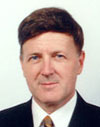 William Miller is President of Maximum Control Technologies (MaCT), a MILLER W J & ASSOCIATES Company with offices in the United States and Canada. He is a graduate of Pennsylvania State University with degrees in Electrical Engineering, Telecommunications, and Computer Programming with 40 years of experience in the systems integration, project management, including design and international sales of numerous process control systems for power, pulp & paper, chemical, and cement industry as well as consulting and standards development.
William Miller is President of Maximum Control Technologies (MaCT), a MILLER W J & ASSOCIATES Company with offices in the United States and Canada. He is a graduate of Pennsylvania State University with degrees in Electrical Engineering, Telecommunications, and Computer Programming with 40 years of experience in the systems integration, project management, including design and international sales of numerous process control systems for power, pulp & paper, chemical, and cement industry as well as consulting and standards development.
William Miller is a noted speaker on cyber security, Mobile Ad hoc NETorks (MANET) wireless in industrial plants, Smart Grid, Smart Cities, developing the 1st Semantic Web 3.0 standard using IoT XMPP for the Internet of Things (IoT) and development of an arachitecturaturla framework for IoT Harmonization. He has been active participant in a number of industrial security and wireless standardization efforts, including ISA-99 Inustrial Control Systems Security & ISA100 Wireless Systems for Automation. He is also the founding member of the Process Control Security Requirements Forum (PCSRF) which is hosted by the National Institute of Standards and Technology (NIST). He has also contributed to security standardization for the US Government including the Federal Information Security Management Act (FISMA) guidelines, review of NERC reliablity and security requirements vs NIST SP800-53, and recommendations for security in NIST SP800-82 Guide for Industrial Control Systems (ICS) Security.
He is Chairman for IEEE P2030 TF3 WG2 Use Cases for Interopreabilty of the Smart Grid, Chairman of P1451-1-4 (Sensei-IoT*), and IEEE P1451-99 IoT Harmonization Chairman with subgroups in India, China, and US/EU which is cosponsored by the IEEE Instrument & Measurement Society (I&MS), IEEE Sensors Counvil (SC), and IEEE Industrial Electronics Society (IES). He is member of IEEE SA Steering Committee and IEEE SA Smart Cities Steering Committee, ISO/IEC/JJTC1/SN1 member for Sensor Networks, NIST Transactive Energy Working Group and IEEE P825 Interoperability of Transactive Energy Systems. He is also currenly a a speaker on application of Blockchain technology for Transactive Energy (TE) applications and protection of privacy to meet EU Global Data Protection Regulation (GDPR) Compliance.
Presentation: IEEE P1451-99: Standard for Harmonisation of IoT Devices and Systems
Transducers are sensors and actuators for the Internet of Things (IoT) and encryption is a method of trust that can assure confidence. It is a challenge to deliver reliable data for decision making and control actions. This has become a concern as IoT devices are used in Smart Cities and critical applications. It is imperative that a device delivers data with the correct characteristics can be trusted. In this presentation, we discuss how encryption can be used to validate a device so data can be read or a control action can be made reliably. This is particularly important since many IoT devices today do not perform this validation. The transport layer can be encrypted, however, the data from a sensor and control of a actuator may be incorrect. This discussion also offers information needed for use of transducers in Blockchains. IoT Harmonization must address this capability since numerous devices do not offer this function. It can be added as part of device provisioning. This action with encryption can also utilize compression to conserve memory and provide assurance of the device characteristics and data integrity. This is extremely important for Smart Cities when utilizing for Transactive Energy (TE), Blockchain, Big Data, Data Analytics, and in Artificial Intelligence (AI)
Steve Olshansky, Internet Technology Program Manager, Internet Society
 Steve Olshansky is the Internet Technology Program Manager at the Internet Society (internetsociety.org), based in Boulder, Colorado, USA.
Steve Olshansky is the Internet Technology Program Manager at the Internet Society (internetsociety.org), based in Boulder, Colorado, USA.
Prior to joining the Internet Society in 2014, Steve was Director, Federated Technologies for Internet2. He was with Internet2 for 12 years, managing a variety of projects related to increasing trust and security and reducing friction for online business, education, and collaboration. In this context he was especially focused on digital identity and federated identity and access management, including software development, best practices, and policy guidance. Prior to his tenure with Internet2, he was a consultant in eBusiness and online training and education, a content and business developer for IP services at a large US telecommunications carrier, and a founding board member of a leading community content network in the mid-90s.
Steve holds a M.S. in Telecommunications from the University of Colorado at Boulder, and a B.A. in Political Science from Colorado College. He is a member of ACM, and a senior member of IEEE.
Presentation: Internet of Things Security and Privacy: Challenges and Opportunities
The IoT is having a substantial and rapidly growing impact on the Internet and its users. Security and privacy are challenging and multi-dimensional problems as this arena expands. Attacks on devices, applications and services threaten the safety and privacy of users and their data, and attacks on IoT within critical infrastructure threaten the delivery of critical services.
The IoT ecosystem is in many ways quite fragmented, and proprietary vs. open and interoperable solutions are competing in the marketplace. Standards and certification organizations are working at various levels, but codification and standardization of processes and implementations in the IoT space is an ongoing challenge. And as is often the case, technology is ahead of associated regulation and policy.
This presentation will address the issues and challenges in the IoT Ecosystem, especially related to security and privacy, and potential approaches to addressing them.
Terence Siau, Co-Founder/Director, TINDO Pte Ltd and Sales Director, Cloud Security Alliance APAC
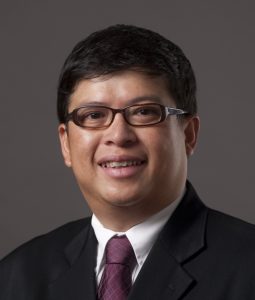 Terence co-founded TINDO Pte Ltd in year 2013. Terence will be focusing on offering Cyber/Information Security solutions and services in ASEAN region. He has over 18 years of Technical, Business and Sales experience in Information Technology sector (inclusive of over 10 years in Cyber/Information Security). His in-depth knowledge in information technology and vast experience in direct selling and channels operations have been instrumental in the generating the pervasiveness of TINDO in ASEAN.
Terence co-founded TINDO Pte Ltd in year 2013. Terence will be focusing on offering Cyber/Information Security solutions and services in ASEAN region. He has over 18 years of Technical, Business and Sales experience in Information Technology sector (inclusive of over 10 years in Cyber/Information Security). His in-depth knowledge in information technology and vast experience in direct selling and channels operations have been instrumental in the generating the pervasiveness of TINDO in ASEAN.
Prior to TINDO, Terence was the Director of ASEAN Sales in CyberArk Software Ltd. He had previously worked in organizations such as Check Point Software, Sony, Singapore Computer Systems, CSA Automated and Quantiq International. In year 2013, Terence joined Cloud Security Alliance in Singapore, holding the title of Sales Director. His roles include engaging Information Security vendors to participate in Cloud Security Alliance activities and speaking in conferences. The objective is to promote the best practice for Cloud Security adoption.
Terence has a Bachelor in Information Technology at Queensland University of Technology. He majored in Data Communications.
Presentation: Cyber Security Guidelines for Smart City Technology Adoption
A smart city is an urban area that uses different types of electronic data collection sensors to supply information used to manage assets and resources efficiently. This includes data collected from citizens, devices, and assets that is processed and analyzed to monitor and manage traffic and transportation systems, power plants, water supply networks, waste management, law enforcement, information systems, schools, libraries, hospitals, and other community services. The smart city concept integrates ICT, and various physical devices connected to the network to optimize the efficiency of city operations and services and connect to citizens. This talk will share the CSA’s view on the Cyber Security Guidelines for Smart City Technology Adoption.
Chris Steck, Cisco Systems
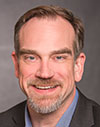 Chris Steck is Head of Standardization, IoT & Industries for Cisco, where he is responsible for the overall strategy for Cisco’s IoT and industrial standards initiatives, and serves on the board of the Open Connectivity Foundation. Chris held a similar role at Jasper Technologies, prior to their acquisition by Cisco, driving Jasper’s standards interests in LPWA networking, device provisioning/management, and IoT security. Prior to that, he drove standardization of voice enhancement software and hardware capabilities for Audience (now a part of Knowles), and held similar responsibilities at RealNetworks, driving standards and guiding research in digital media, while serving on the board of the International Multimedia Telecommunications Consortium as CTO. Much further back he spent several years at Microsoft on Win95 through XP. A veteran of several startups along the way, he’s also created mobile apps for managing family life, a WiFi phone switch, an operating system GUI for early smartphones, and computer telephony & speech recognition software.
Chris Steck is Head of Standardization, IoT & Industries for Cisco, where he is responsible for the overall strategy for Cisco’s IoT and industrial standards initiatives, and serves on the board of the Open Connectivity Foundation. Chris held a similar role at Jasper Technologies, prior to their acquisition by Cisco, driving Jasper’s standards interests in LPWA networking, device provisioning/management, and IoT security. Prior to that, he drove standardization of voice enhancement software and hardware capabilities for Audience (now a part of Knowles), and held similar responsibilities at RealNetworks, driving standards and guiding research in digital media, while serving on the board of the International Multimedia Telecommunications Consortium as CTO. Much further back he spent several years at Microsoft on Win95 through XP. A veteran of several startups along the way, he’s also created mobile apps for managing family life, a WiFi phone switch, an operating system GUI for early smartphones, and computer telephony & speech recognition software.
Presentation: Managing 50 Billion Things
Today, each IT person in the enterprise manages, on average, less than 250 devices. With the advent of IoT, that ratio needs to grow closer to one million to one to be manageable. This presentation will discuss how we’ll get there utilizing standardized interoperable technologies in security, device management, and automated onboarding.
Nestor Michael Tiglao, Associate Professor, Electrical and Electronics Engineering Institute, University of the Philippines Diliman
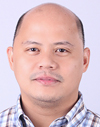 Nestor Michael Tiglao received his B.S. and M.S. degrees in Electrical Engineering from the University of the Philippines, Diliman, Quezon City, Philippines, in 1995 and 2005, respectively. He obtained his Ph.D. degree in Electrical and Computer Engineering from Instituto Superior Técnico, Technical University of Lisbon, Portugal in 2013. He is currently an Associate Professor at the Electrical and Electronics Engineering Institute, University of the Philippines Diliman. His main research interests are in wireless sensor networks, Internet of Things, and Smart Cities.
Nestor Michael Tiglao received his B.S. and M.S. degrees in Electrical Engineering from the University of the Philippines, Diliman, Quezon City, Philippines, in 1995 and 2005, respectively. He obtained his Ph.D. degree in Electrical and Computer Engineering from Instituto Superior Técnico, Technical University of Lisbon, Portugal in 2013. He is currently an Associate Professor at the Electrical and Electronics Engineering Institute, University of the Philippines Diliman. His main research interests are in wireless sensor networks, Internet of Things, and Smart Cities.
Presentation: Transactive Energy Infrastructure for Quezon City, Philippines
Transactive Energy (TE) is a promising mechanism to support bidirectional communications and maintain a reliable and efficient energy balance in a Smart Grid. In this talk, we will present the vision and the proposed architecture for a TE infrastructure in Quezon City, Philippines. We will also discuss the main issues and challenges related to TE deployment.
Cathy Yeh, Principal Program Manager, Internet of Things Innovation Center, R&D Azure IoT, Microsoft
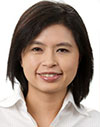 Cathy Yeh is now leading the Microsoft Internet of Things Innovation Center based in Taiwan, report to the Cloud and Enterprise Engineering Group of Microsoft Corporate. She is responsible for development of Asian IoT partner ecosystem through Federated Labs initiatives across Manufacturing and Smart City. Prior to this role, she served as director in Microsoft Taiwan Marketing and Operation organization, in charge of the marketing strategy and execution for Microsoft’s cloud services and solutions for enterprise. She also took a role in Microsoft OEM global business group, responsible for product design-in and business planning. Prior to joining Microsoft, she served as Hewlett-Packard’s Senior Architect and TrendMicro developer.
Cathy Yeh is now leading the Microsoft Internet of Things Innovation Center based in Taiwan, report to the Cloud and Enterprise Engineering Group of Microsoft Corporate. She is responsible for development of Asian IoT partner ecosystem through Federated Labs initiatives across Manufacturing and Smart City. Prior to this role, she served as director in Microsoft Taiwan Marketing and Operation organization, in charge of the marketing strategy and execution for Microsoft’s cloud services and solutions for enterprise. She also took a role in Microsoft OEM global business group, responsible for product design-in and business planning. Prior to joining Microsoft, she served as Hewlett-Packard’s Senior Architect and TrendMicro developer.
Presentation: Accelerating Industrial 4.0 with Connected IoT Ecosystem
Asia used to be hub of manufacturing, recently the most manufactures are facing dramatically challenges and keen to change the production models from mass production to mass customization and the interoperability is key in the new digital era. During this session, we’ll address Microsoft’s strategy on realizing digitalization transformation in manufacturing with supporting OPC UA, also sharing our practices on OT/IT integration in commercial and public segments.
Yi Zhao, Vice President, Futurewei Technologies, Inc. (Huawei R&D USA)
Yi Zhao, Ph.D. is the Vice President of Futurewei Technologies, Inc. (Huawei R&D USA), the North America subsidiary of Huawei Technologies, Ltd. headquartered in Shenzhen, China. As its first US employee, Dr. Zhao assisted the parent company in successfully establishing the subsidiary organization in Plano, Texas. During his career in Huawei, Dr. Zhao has been in various leadership roles of company’s operation, research and development, sales and marketing, standards and industry development, Open Source, business strategy and development, intellectual property rights, as well as the company’s public and industry relations.
Dr. Zhao has over 25 years experience in telecommunications and IT industries. Prior to joining Huawei, Dr. Zhao worked for research institutes (Shanghai Jiao Tong University and The University of Texas at Dallas) and major corporations — Hewlett Packard and Ericsson — in different technical and managerial positions.
Dr. Zhao has served in the board for numbers of forums and committees in ICT industry including Alliance for Telecommunications Industry Solutions (ATIS), IPsphere Forum, Open Patent Alliance (OPA), and International Committee for Information Technology Standards (INCITS). He has been frequently invited to speak to various industry and business forums around world.
Dr. Zhao was a board director for the Dallas Regional Chamber and co-chair of the DRC Innovation and Technology Council. He is currently a member of Associate Board for SMU Cox School of Business, and a member of the Executive Council for the UT Dallas Eric Johnson School of Engineering and Computer Science.
In 2008, Dr. Zhao received the Distinguished Alumni Award from The University of Texas at Dallas. It is the highest honor bestowed on alumni and is given to individuals who are distinguished in their chosen profession or life’s work and who demonstrate pride in the University.
Dr. Zhao has a BSCS and an MSCS from Shanghai Jiao Tong University, and a Ph.D. in computer science from The University of Texas at Dallas.
Presentation: Open Standards, Open Source, and Digital Transformation
This presentation will discuss the value propositions of open standards and open source, and the challenges to align open standards and open source together. An IoT related open standards and open source landscape will be described. Views and practice on applying open standards and open source to digital transformation will be presented.
Chien Siang Yu, Chief Innovation Officer, Certis CISCO
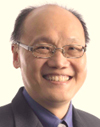
As Certis’ Chief Innovation Officer, Professor Yu is responsible for cultural transformation, strategic problem solving and innovations in areas such as Big Data, video and cognitive processing, Smart Nation, Internet of Things (IoT), robotics, drones and high security solutioning.
Previously, Professor Yu held a similar role with the Ministry of Home Affairs. He has worked in the Civil Service since 1981 and was awarded National Day Honours, The Public Administration Medal (Silver) in 1993 and The Public Administration Medal (Silver) Bar in 2004.
Prior to being part of the Civil Service, he was awarded the Carl Duisberg Gesellschaft Scholarship, a Public Service Commission Scholarship, to pursue his studies at Fachhochschule Munchen, where he graduated as a Data Systems Engineer. During his studies, he received training at the Siemens Research Laboratory and IBM R&D Laboratory in Boblingen.
Professor Yu has been active in the fields of IT management and IT security for more than 20 years. He has led numerous national-level projects in IT security and homeland security and has been instrumental in evolving their architecture and fundamental mechanisms.
Professor Yu, a pioneer in the exploitation of microcomputers, is a former President of the Singapore Microcomputer Society. He is the inventor of cost-efficient and unique smart card readers, cryptography systems, more efficient protocols and fault tolerant systems. He is also an Adjunct Associate Professor at the Department of Mathematics at the National University of Singapore where he teaches an introductory course on cyber security.
Presentation: Future of IoT with Embedded AI and Its New Security Implications
This presentation will focus on the rapid developments of new cognitive chips for running embedded AI via Deep Learning and how they will soon become mainstream capabilities for IoT, via the emergence of AI powered smart cameras, robotic and drone autonomous controls and finally next generation devices for smart building maintenance and facility management. These self learning, adaptive low power systems will revolutionise IoT systems, as they will not only be able to deliver low cost intelligence at the edge but also can collaborate well with each other by exploiting smart agents and cloud AI backends. The talk will also share performance and cost expectations, as well as new findings about how such narrow AI can make mistakes, leading to possible safety and security issues. Thus, there is a need for new standards to manage embedded AI.



